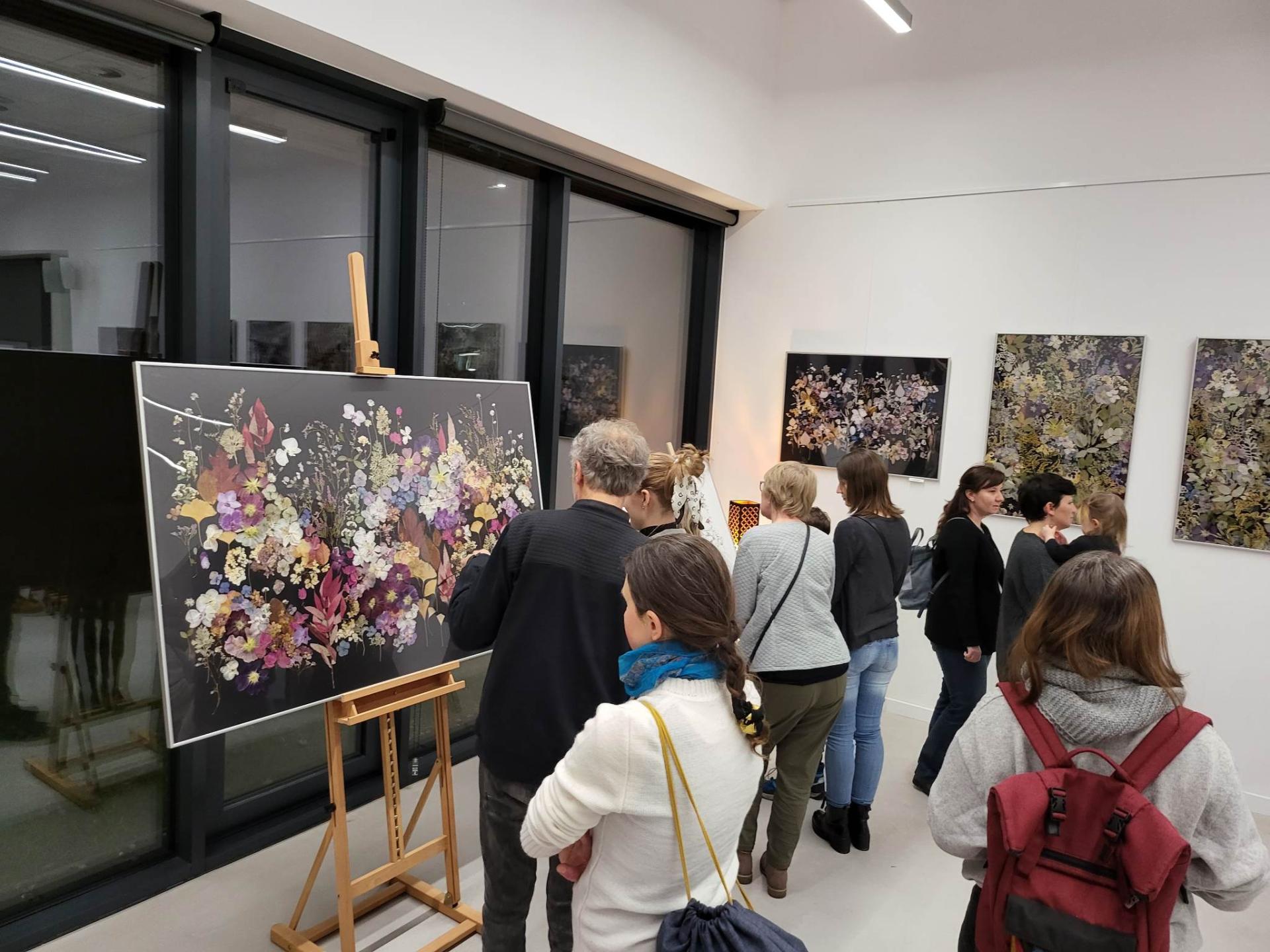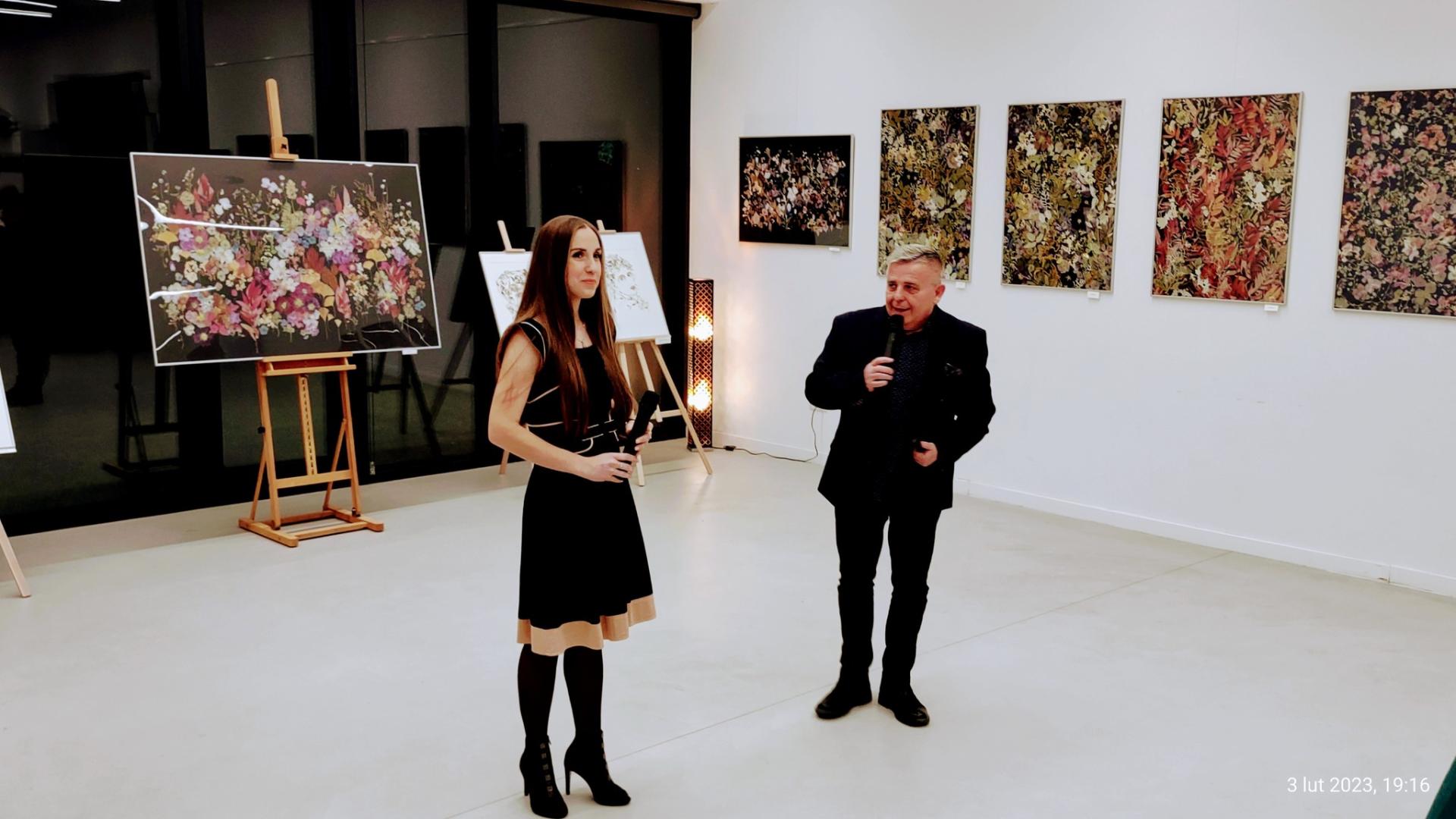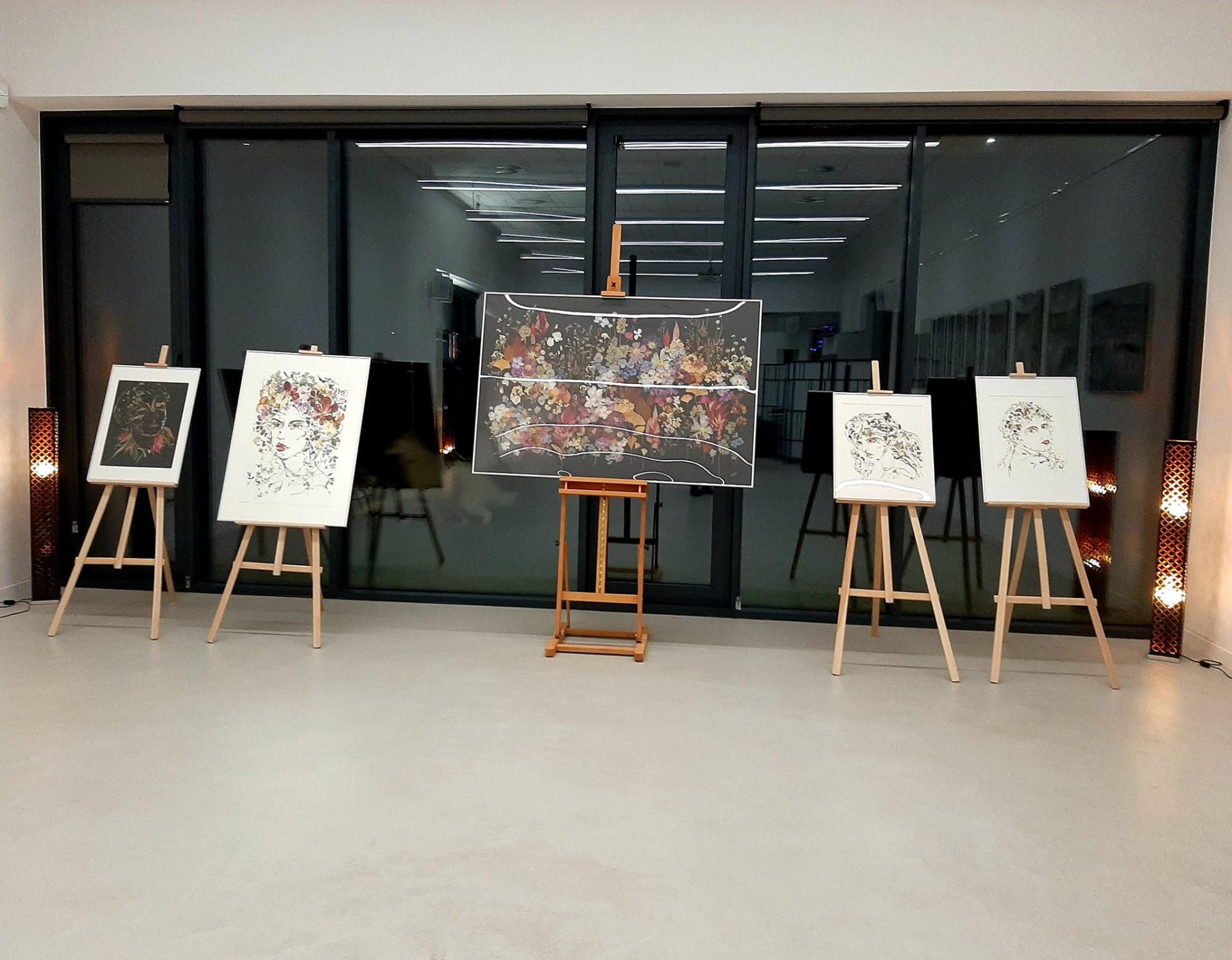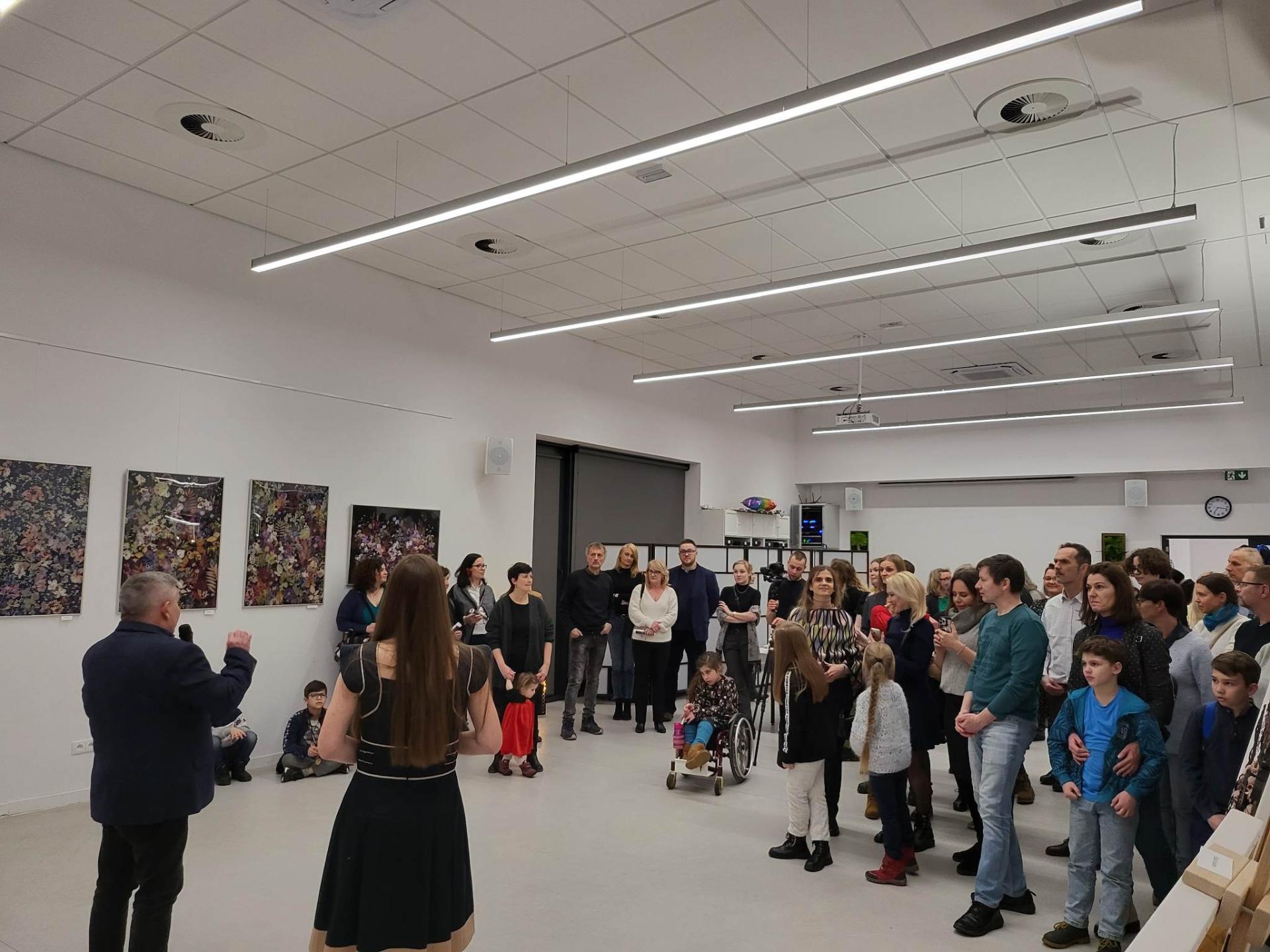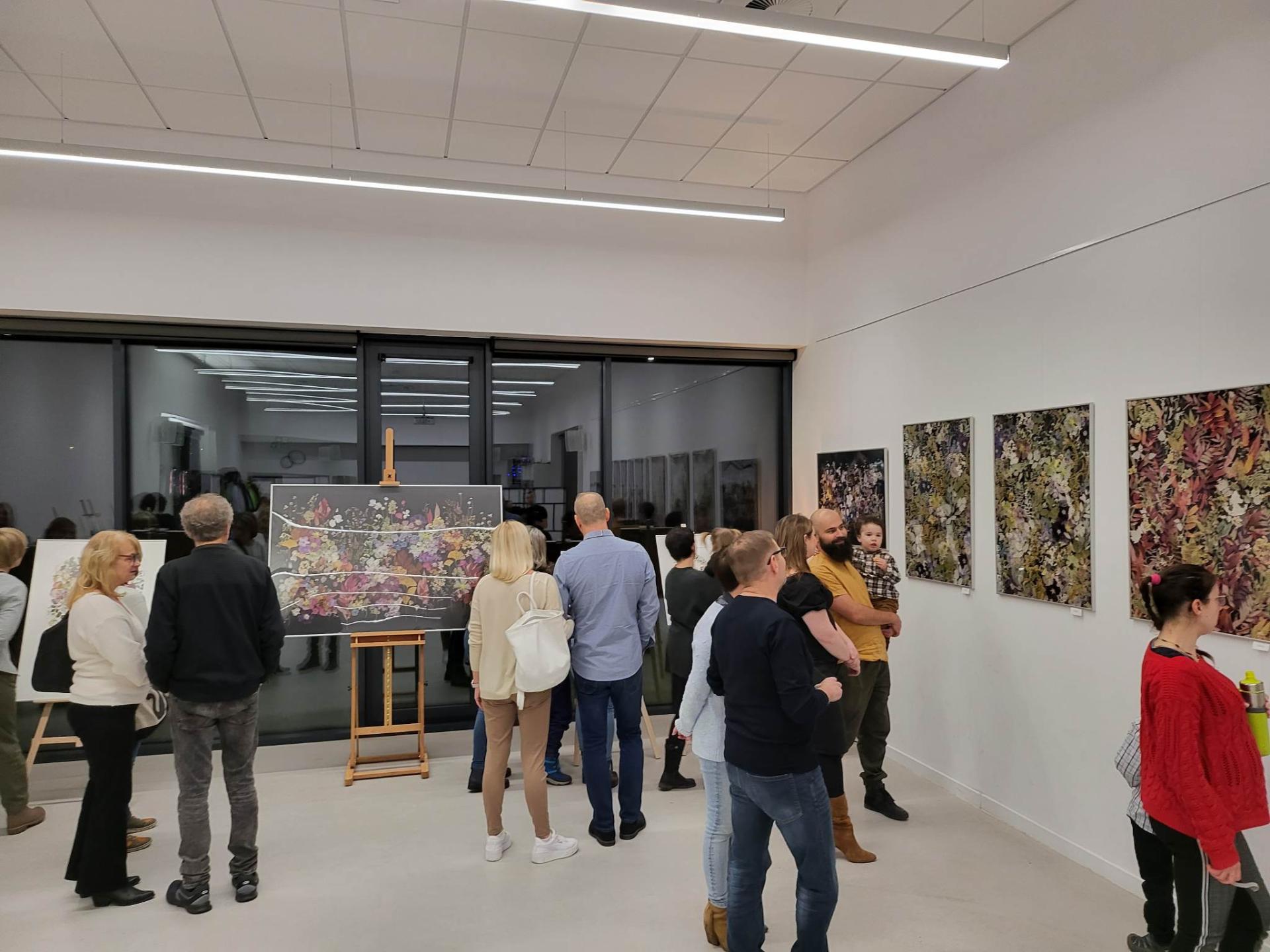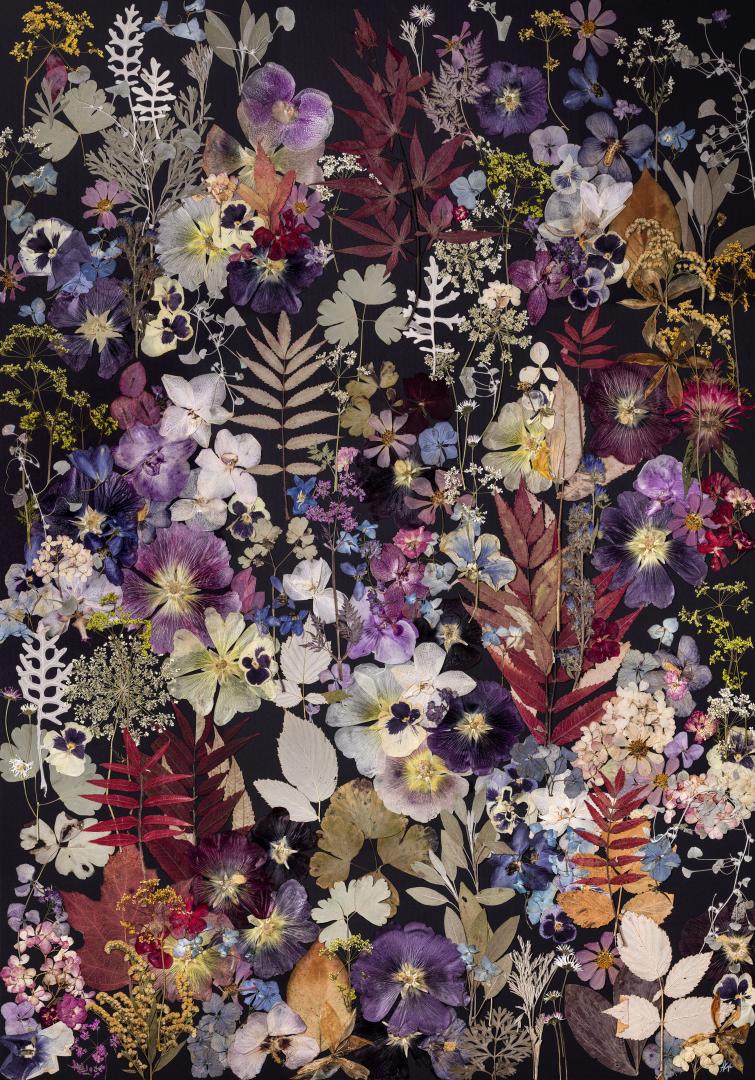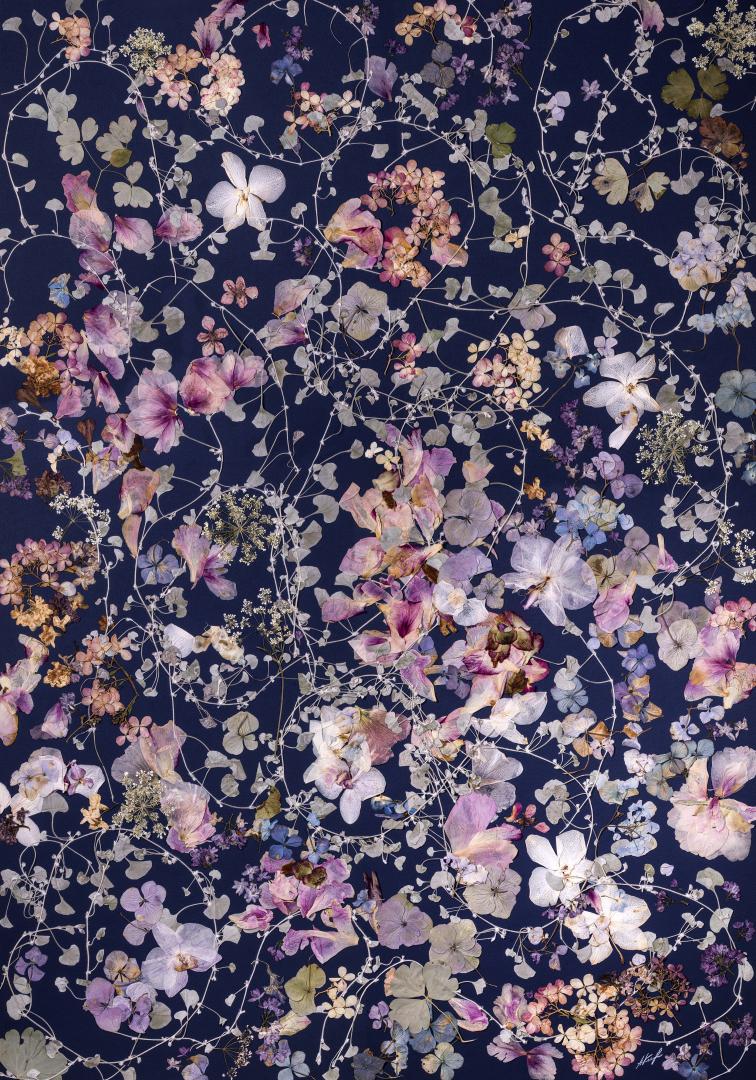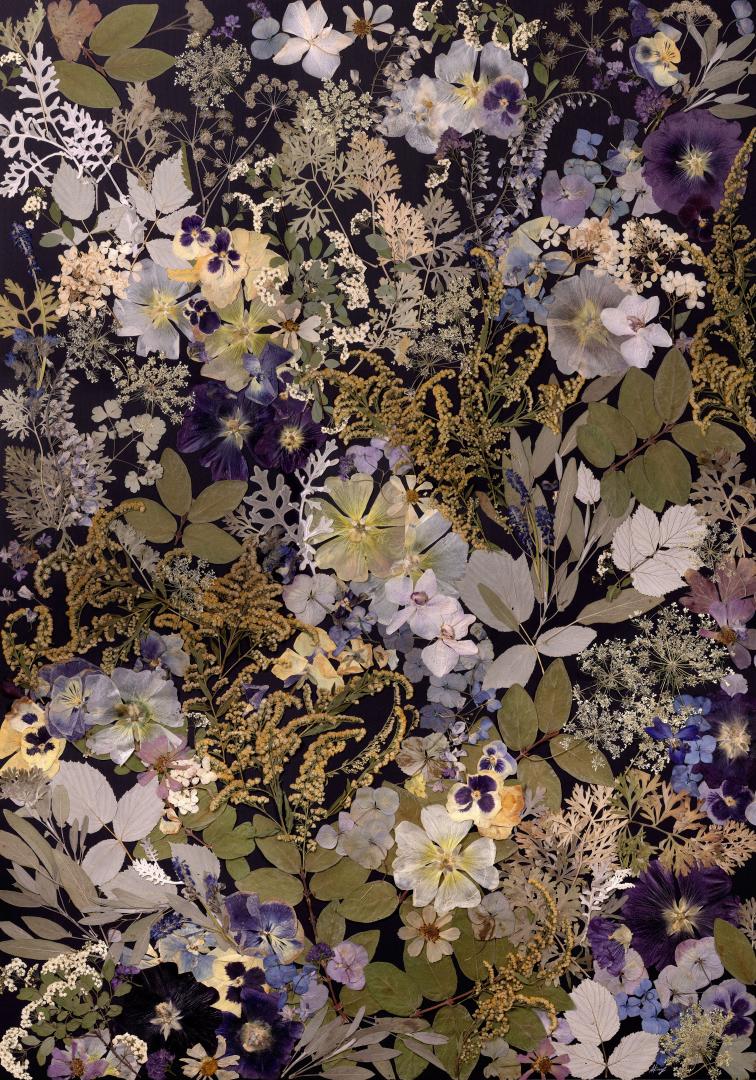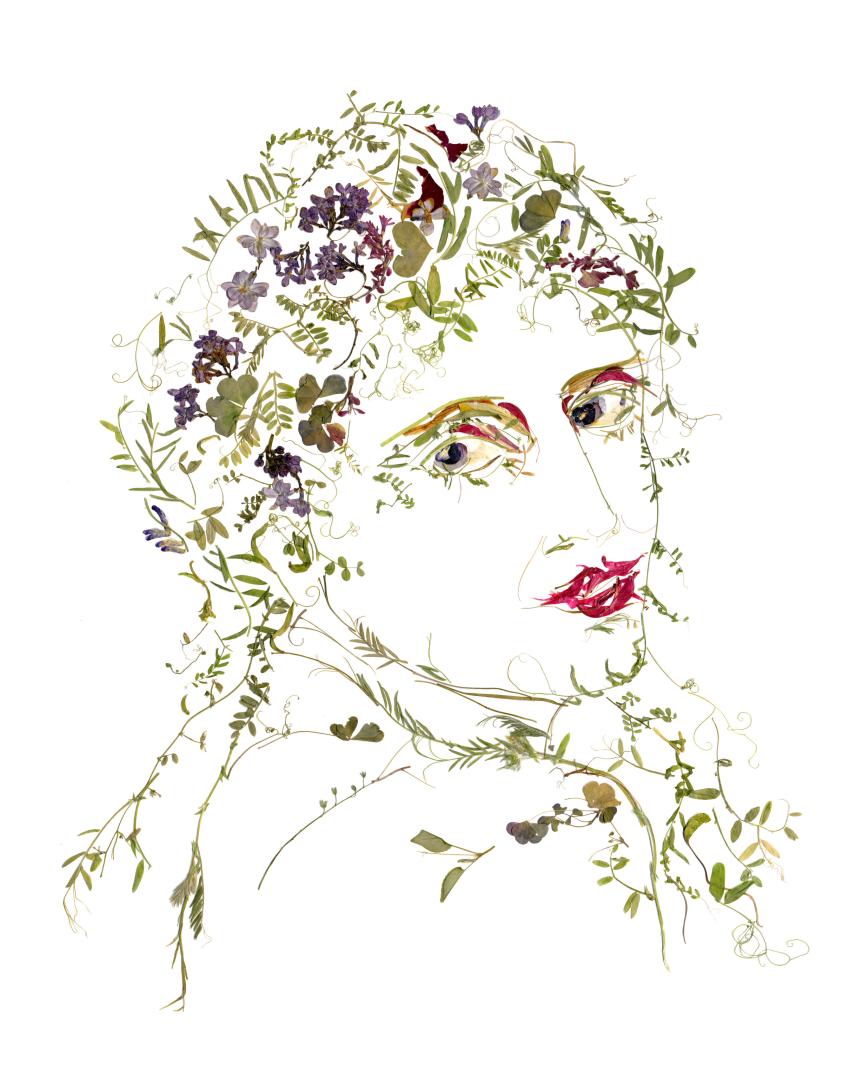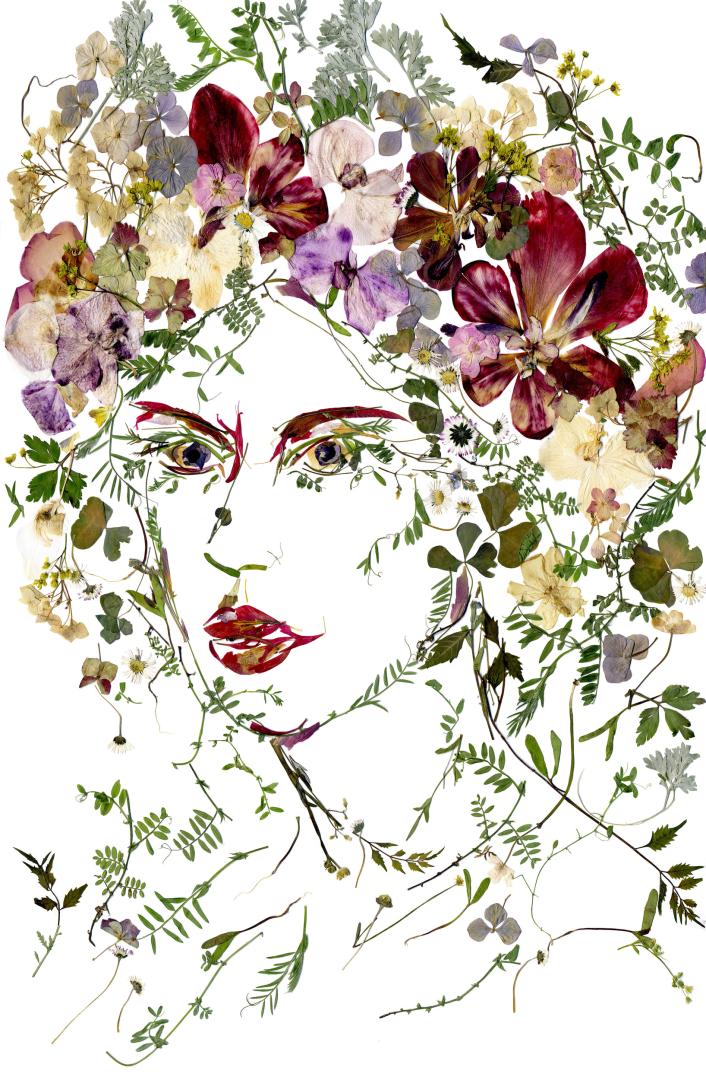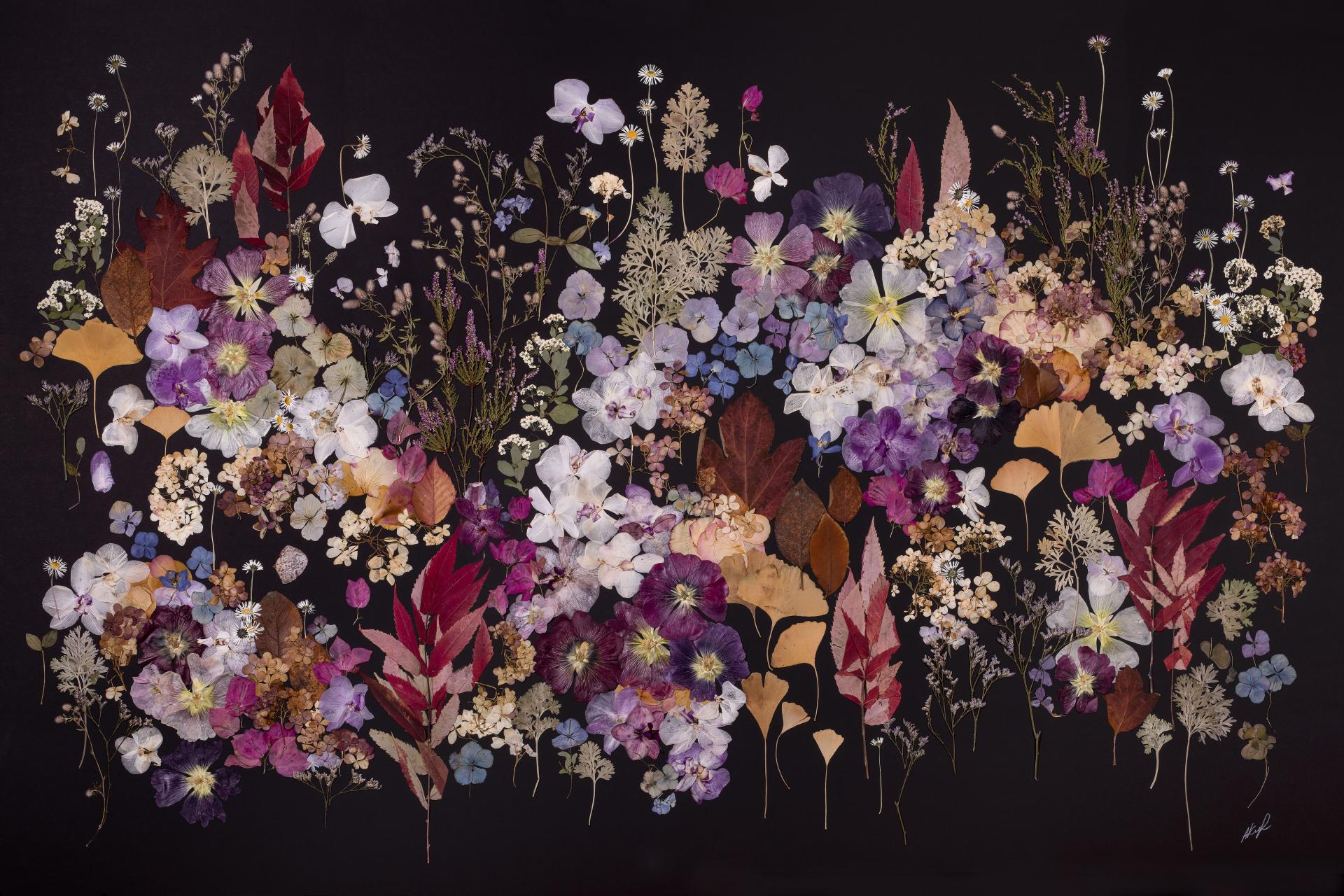Eco-Art School Revival
Basic information
Project Title
Eco-Art School Revival
Full project title
Reconnecting with Nature through Education and Art for a Sustainable Tomorrow
Category
Reconnecting with nature
Project Description
Transforming schools into ecological havens with pressed flower collages, inspiring children to reconnect with nature, learn about biodiversity, and raise ecological awareness. A harmonious blend of education and art.
Geographical Scope
Local
Project Region
Wroclaw, Poland
Urban or rural issues
Mainly urban
Physical or other transformations
It refers to other types of transformations (soft investment)
EU Programme or fund
No
Description of the project
Summary
The project aims to bridge the gap between urban living and the natural world by transforming school spaces into hubs of ecological education and art. It seeks to inspire a sense of connection with nature and instill values for a sustainable future.
The target audience includes school children, educators, community of local districts, and the broader school community, with a focus on urban schools in Poland.
Objectives:
Promoting Biodiversity: Educate students about plant diversity through pressed flower collages, especially about local flora.
Raising Ecological Awareness: Increase students' understanding of ecological issues and the need for environmental protection.
Hands-On Learning: Engage students in active participation in reconnecting with nature.
Inspiring Sustainable Living: Motivate children to adopt sustainable lifestyles and become stewards of the environment.
Achieved Outcomes: The project has successfully transformed environment of the center of local activity with pressed flower collages, fostering a sense of connection with nature. Students have learned about biodiversity, raised ecological awareness, and actively participated in the process. The project's art and education blend has inspired a sustainable mindset in the school community.
This project was realized as a temporary exhibition and public speech on the topic of Raising Ecological Awareness in the Center of Local Activity in Wrocław. In the future I would like to offer this collection of pressed flower collages for other schools and institutions as a permanent decoration of halls and biology classes
In summary, my future plans to offer this collection of pressed flower collages as permanent decorations for schools and institutions represent a profound commitment to ecological education and art. This transition from a temporary exhibition to a long-term educational resource is a significant step toward a more harmonious and ecologically aware future.
The target audience includes school children, educators, community of local districts, and the broader school community, with a focus on urban schools in Poland.
Objectives:
Promoting Biodiversity: Educate students about plant diversity through pressed flower collages, especially about local flora.
Raising Ecological Awareness: Increase students' understanding of ecological issues and the need for environmental protection.
Hands-On Learning: Engage students in active participation in reconnecting with nature.
Inspiring Sustainable Living: Motivate children to adopt sustainable lifestyles and become stewards of the environment.
Achieved Outcomes: The project has successfully transformed environment of the center of local activity with pressed flower collages, fostering a sense of connection with nature. Students have learned about biodiversity, raised ecological awareness, and actively participated in the process. The project's art and education blend has inspired a sustainable mindset in the school community.
This project was realized as a temporary exhibition and public speech on the topic of Raising Ecological Awareness in the Center of Local Activity in Wrocław. In the future I would like to offer this collection of pressed flower collages for other schools and institutions as a permanent decoration of halls and biology classes
In summary, my future plans to offer this collection of pressed flower collages as permanent decorations for schools and institutions represent a profound commitment to ecological education and art. This transition from a temporary exhibition to a long-term educational resource is a significant step toward a more harmonious and ecologically aware future.
Key objectives for sustainability
Objective: My project aims to instill a sense of connection with nature and inspire sustainable living. I want to educate students about ecological issues and promote biodiversity.
Exemplary Achievement: Through the use of pressed flower collages and hands-on learning, students gain a deep understanding of the importance of biodiversity and ecological sustainability. This awareness not only contributes to individual behavior change but also extends to the broader school community. By connecting children to nature, we are fostering a more sustainable mindset for future generations.
By engaging students in active participation in reconnecting with nature through flower collection and collage creation, the project promotes experiential learning, which is a sustainable method of education.
Exemplary Achievement: Hands-on learning encourages a profound understanding of nature and ecosystems. It equips students with practical skills to make sustainable choices and to implement eco-friendly initiatives in their lives. This approach contributes to long-term sustainability by creating environmentally conscious individuals.
Exemplary Achievement: Through the use of pressed flower collages and hands-on learning, students gain a deep understanding of the importance of biodiversity and ecological sustainability. This awareness not only contributes to individual behavior change but also extends to the broader school community. By connecting children to nature, we are fostering a more sustainable mindset for future generations.
By engaging students in active participation in reconnecting with nature through flower collection and collage creation, the project promotes experiential learning, which is a sustainable method of education.
Exemplary Achievement: Hands-on learning encourages a profound understanding of nature and ecosystems. It equips students with practical skills to make sustainable choices and to implement eco-friendly initiatives in their lives. This approach contributes to long-term sustainability by creating environmentally conscious individuals.
Key objectives for aesthetics and quality
I believe in the power of aesthetics and the beauty of the natural world. My project uses pressed flower collages to transform school spaces into visually appealing, ecologically inspired environments.
Exemplary Achievement: By integrating art and nature in school decor, I demonstrate how aesthetics can be combined with ecological values. The visual impact of my collages creates an inviting and harmonious atmosphere that engages students and enhances their appreciation of the natural world. This combination of aesthetics and sustainability showcases the principles of the New European Bauhaus.
In Europe, Oshibana (pressed flower art) is not as widely known or appreciated as it is in Japan. Oshibana is a great way to bring beauty and harmony into one's home and can serve as a reminder of the importance of taking time to appreciate the beauty of nature. No wonder this art form was practiced by the samurai in the 16th century in Japan and used this art as a way of finding harmony through creating and contemplation art pieces
Exemplary Achievement: By integrating art and nature in school decor, I demonstrate how aesthetics can be combined with ecological values. The visual impact of my collages creates an inviting and harmonious atmosphere that engages students and enhances their appreciation of the natural world. This combination of aesthetics and sustainability showcases the principles of the New European Bauhaus.
In Europe, Oshibana (pressed flower art) is not as widely known or appreciated as it is in Japan. Oshibana is a great way to bring beauty and harmony into one's home and can serve as a reminder of the importance of taking time to appreciate the beauty of nature. No wonder this art form was practiced by the samurai in the 16th century in Japan and used this art as a way of finding harmony through creating and contemplation art pieces
Key objectives for inclusion
I aim to make ecological awareness inclusive by targeting school children and the school community in urban areas, particularly in Wroclaw, Poland.
Exemplary Achievement: My project embraces inclusiveness by reaching out to diverse groups, including students, educators, and parents. I create a shared sense of ecological awareness that transcends age and background, fostering a sense of community and shared responsibility for the environment. This inclusive approach aligns with the New European Bauhaus' emphasis on involving a wide range of stakeholders.
Exemplary Achievement: My project embraces inclusiveness by reaching out to diverse groups, including students, educators, and parents. I create a shared sense of ecological awareness that transcends age and background, fostering a sense of community and shared responsibility for the environment. This inclusive approach aligns with the New European Bauhaus' emphasis on involving a wide range of stakeholders.
Results in relation to category
Direct Beneficiaries:
Local Communities: The project has created a sense of community ownership and engagement. It has fostered a shared responsibility for the environment and ecological awareness, bringing the community together for a common cause. The beauty of the pressed flower collages has enriched local spaces and instilled a sense of pride in the community's unique natural heritage
Students: The project has provided students with an enriched educational experience. They have gained a deeper understanding of biodiversity, ecological awareness, and the aesthetics of nature through hands-on interaction with pressed flower collages.
Educators: Teachers and educators have benefitted from the project by gaining access to well-developed educational materials and activities. These resources have enhanced their ability to teach ecological concepts in an engaging and aesthetically appealing manner.
Indirect Beneficiaries:
Other Schools and Educational Institutions: The potential for offering the collection of pressed flower collages to other schools and institutions as permanent decorations has a positive indirect impact. It allows the project's benefits to extend beyond the initial beneficiaries and reach a broader audience.
Broader Society: By fostering ecological awareness, aesthetics, and a sense of community responsibility, my project contributes to a more ecologically conscious and harmonious society. The indirect impact can be seen in the form of a growing ecological awareness and appreciation for the beauty of the natural world among society at large.
Local Communities: The project has created a sense of community ownership and engagement. It has fostered a shared responsibility for the environment and ecological awareness, bringing the community together for a common cause. The beauty of the pressed flower collages has enriched local spaces and instilled a sense of pride in the community's unique natural heritage
Students: The project has provided students with an enriched educational experience. They have gained a deeper understanding of biodiversity, ecological awareness, and the aesthetics of nature through hands-on interaction with pressed flower collages.
Educators: Teachers and educators have benefitted from the project by gaining access to well-developed educational materials and activities. These resources have enhanced their ability to teach ecological concepts in an engaging and aesthetically appealing manner.
Indirect Beneficiaries:
Other Schools and Educational Institutions: The potential for offering the collection of pressed flower collages to other schools and institutions as permanent decorations has a positive indirect impact. It allows the project's benefits to extend beyond the initial beneficiaries and reach a broader audience.
Broader Society: By fostering ecological awareness, aesthetics, and a sense of community responsibility, my project contributes to a more ecologically conscious and harmonious society. The indirect impact can be seen in the form of a growing ecological awareness and appreciation for the beauty of the natural world among society at large.
How Citizens benefit
They have been integral to the project's sustainability objectives, as they've learned about biodiversity, ecological awareness, sustainable living practices, and ecological craft. Their involvement has fostered a sense of collective responsibility for the environment.
The Center of Local Activity gave a place for the pressed flower collages within halls, ensuring that the art enhances the visual appeal of educational spaces.
Impact: Their involvement has created an aesthetically pleasing and harmonious atmosphere that resonates with a broad audience. This collaborative approach to design, guided by the preferences of the community, has made the art more relatable and appealing.
Citizens of the local district, parents, and the wider community have actively participated in decision-making processes related to the project. Their voices have been heard in the selection of plant species, the design of the collages.
The Center of Local Activity gave a place for the pressed flower collages within halls, ensuring that the art enhances the visual appeal of educational spaces.
Impact: Their involvement has created an aesthetically pleasing and harmonious atmosphere that resonates with a broad audience. This collaborative approach to design, guided by the preferences of the community, has made the art more relatable and appealing.
Citizens of the local district, parents, and the wider community have actively participated in decision-making processes related to the project. Their voices have been heard in the selection of plant species, the design of the collages.
Physical or other transformations
It refers to other types of transformations (soft investment)
Innovative character
Integration of Art and Education: This innovative approach adds an artistic and sensory dimension to traditional environmental education.
Tangible and Aesthetic Impact: The use of aesthetics as a tool for ecological education is innovative and creates a deeper impact.
Inclusiveness and Community Engagement: It fosters a sense of community ownership and responsibility for the environment, a departure from the more top-down approaches in mainstream education.
Sustainability through Fine Art Reproduction: The involvement of a photographer and an expert in printmaking is an innovative approach to sustainability. It ensures that the pressed flower collages can be reproduced many times with precision, making the project scalable and sustainable, with the potential to decorate numerous schools in the future.
Cross-Cultural Influence: Introducing Oshibana (pressed flower art) to Europe from its origins in Japan adds a cross-cultural dimension to your project. This introduces different artistic and ecological perspectives to a European context, enriching the experience and promoting a global approach to ecological awareness.
In summary, your project is innovative in its integration of art and education, its tangible and aesthetic impact, its inclusive community engagement, its sustainable fine art reproduction, and its cross-cultural influence. These aspects set it apart from mainstream actions in the field of ecological education and make it a unique and impactful initiative.
Tangible and Aesthetic Impact: The use of aesthetics as a tool for ecological education is innovative and creates a deeper impact.
Inclusiveness and Community Engagement: It fosters a sense of community ownership and responsibility for the environment, a departure from the more top-down approaches in mainstream education.
Sustainability through Fine Art Reproduction: The involvement of a photographer and an expert in printmaking is an innovative approach to sustainability. It ensures that the pressed flower collages can be reproduced many times with precision, making the project scalable and sustainable, with the potential to decorate numerous schools in the future.
Cross-Cultural Influence: Introducing Oshibana (pressed flower art) to Europe from its origins in Japan adds a cross-cultural dimension to your project. This introduces different artistic and ecological perspectives to a European context, enriching the experience and promoting a global approach to ecological awareness.
In summary, your project is innovative in its integration of art and education, its tangible and aesthetic impact, its inclusive community engagement, its sustainable fine art reproduction, and its cross-cultural influence. These aspects set it apart from mainstream actions in the field of ecological education and make it a unique and impactful initiative.
Disciplines/knowledge reflected
1. Environmental Science and Biology:
Experts in environmental science and biology were involved in the selection of plant species, ecological awareness content, and the educational aspects of the project.
2. Art and Design:
As an artist, I played a crucial role in creating the pressed flower collages and designing the aesthetic aspects of the project.
During the last years I collected and dried a huge quantity of different plant species around Wroclaw, especially in my local district.
Added Value: Their artistic skills transformed the project into an aesthetically pleasing and visually engaging initiative. Art and design elements added beauty to the educational spaces, making the learning environment more inviting.
3. Photographer:
The photographer's expertise in capturing high-resolution images of the pressed flower collages ensures that the fine details, colors, and textures are preserved, creating stunning visual assets.
4. Expert in Printmaking
The printmaking expert played a crucial role in transforming the high-resolution images into fine art prints of the highest quality. His skills resulted in fine art prints that can be reproduced many times with precision and accuracy. This allows for the wide distribution and use of the collages in the decoration of numerous schools, making the project's impact scalable and sustainable. Original collaged can fade during the time, but fine art prints will not change color during 100 years
5. Education and Pedagogy:
I as a teacher of pressed flower art organized regular floral collages classes in this place that allowed high the awareness on ecological awareness and develop artistic potential
6. Media and Communication:
Professionals in media and communication played a vital role in creating promotional materials, educational content, and documentaries.
Experts in environmental science and biology were involved in the selection of plant species, ecological awareness content, and the educational aspects of the project.
2. Art and Design:
As an artist, I played a crucial role in creating the pressed flower collages and designing the aesthetic aspects of the project.
During the last years I collected and dried a huge quantity of different plant species around Wroclaw, especially in my local district.
Added Value: Their artistic skills transformed the project into an aesthetically pleasing and visually engaging initiative. Art and design elements added beauty to the educational spaces, making the learning environment more inviting.
3. Photographer:
The photographer's expertise in capturing high-resolution images of the pressed flower collages ensures that the fine details, colors, and textures are preserved, creating stunning visual assets.
4. Expert in Printmaking
The printmaking expert played a crucial role in transforming the high-resolution images into fine art prints of the highest quality. His skills resulted in fine art prints that can be reproduced many times with precision and accuracy. This allows for the wide distribution and use of the collages in the decoration of numerous schools, making the project's impact scalable and sustainable. Original collaged can fade during the time, but fine art prints will not change color during 100 years
5. Education and Pedagogy:
I as a teacher of pressed flower art organized regular floral collages classes in this place that allowed high the awareness on ecological awareness and develop artistic potential
6. Media and Communication:
Professionals in media and communication played a vital role in creating promotional materials, educational content, and documentaries.
Methodology used
My methodology involves a multifaceted approach that combines art, education, and community engagement. Here's a detailed description of the methodology:
1. Flower Collection and Pressing: I used the knowledge that I got in the floral collage studio.
The project begins with the collection of various plant species from the local environment in Poland. These plants are carefully chosen to represent biodiversity and the unique features of the region. The collected flowers and plants are then pressed to preserve their natural beauty.
2. Artistic Creation:
I graduated from the Academy of Art and Design in Wroclaw, so I was able to use my artistic experience in creating my floral collages.
3. Educational Content Development:
I as an educational expert in floral art worked on creating age-appropriate and engaging content. This content includes information about the selected plant species, their ecological significance, and the importance of biodiversity conservation.
4. Integration into Schools:
The collages and educational materials are integrated into local schools, enhancing the visual appeal of educational spaces and enriching the ecological curriculum.
The project fosters hands-on learning and interaction with the artwork to deepen students' connection with nature.
5. Potential Expansion:
In the future, the project envisions offering the collection of pressed flower collages to other schools and institutions, making it a permanent decoration. This expansion aims to further spread ecological awareness and art.
1. Flower Collection and Pressing: I used the knowledge that I got in the floral collage studio.
The project begins with the collection of various plant species from the local environment in Poland. These plants are carefully chosen to represent biodiversity and the unique features of the region. The collected flowers and plants are then pressed to preserve their natural beauty.
2. Artistic Creation:
I graduated from the Academy of Art and Design in Wroclaw, so I was able to use my artistic experience in creating my floral collages.
3. Educational Content Development:
I as an educational expert in floral art worked on creating age-appropriate and engaging content. This content includes information about the selected plant species, their ecological significance, and the importance of biodiversity conservation.
4. Integration into Schools:
The collages and educational materials are integrated into local schools, enhancing the visual appeal of educational spaces and enriching the ecological curriculum.
The project fosters hands-on learning and interaction with the artwork to deepen students' connection with nature.
5. Potential Expansion:
In the future, the project envisions offering the collection of pressed flower collages to other schools and institutions, making it a permanent decoration. This expansion aims to further spread ecological awareness and art.
How stakeholders are engaged
The engagement of a local organization, a program presenter, and a filmmaker represented a significant advancement in my project. Their involvement enables the project to reach a higher level in several key ways:
Amplified Visibility: With the support of local organizations, my project gains recognition and visibility within the local community. The involvement of local educational organizations in the future can lead to the integration of the project into school curricula or extracurricular activities.
Media and Documentation: It allowed for the creation of educational content, documentary, or promotional materials that can be shared with a wider audience, extending the project's reach beyond the local level.
Amplified Visibility: With the support of local organizations, my project gains recognition and visibility within the local community. The involvement of local educational organizations in the future can lead to the integration of the project into school curricula or extracurricular activities.
Media and Documentation: It allowed for the creation of educational content, documentary, or promotional materials that can be shared with a wider audience, extending the project's reach beyond the local level.
Global challenges
Biodiversity Loss: The project promotes awareness of the importance of biodiversity, which is a pressing global challenge. By showcasing the unique plant species of a local region, it emphasizes the value of preserving and protecting biodiversity on a broader scale.
Ecological Awareness: In an era of climate change and environmental degradation, fostering ecological awareness is essential. My project does this at the local level by connecting students and communities with nature. This local engagement can contribute to a more ecologically aware global population.
Sustainability: The project's emphasis on sustainability aligns with the global need to transition to more sustainable practices. By educating local communities about the significance of ecologically sustainable development, my project contributes to a broader shift toward a more sustainable world.
Art and Education Integration: The integration of art and education offers a unique approach to addressing the global challenge of engaging and educating young generations about ecological issues. It shows that local solutions can be both creative and impactful.
Cross-Cultural Exchange: Introducing Oshibana from Japan to Europe adds a cross-cultural dimension to the project.
Community Empowerment: By actively involving local communities, my project empowers them to take ownership of environmental initiatives. This sense of responsibility and community engagement can serve as a model for addressing global challenges through local participation.
Ecological Awareness: In an era of climate change and environmental degradation, fostering ecological awareness is essential. My project does this at the local level by connecting students and communities with nature. This local engagement can contribute to a more ecologically aware global population.
Sustainability: The project's emphasis on sustainability aligns with the global need to transition to more sustainable practices. By educating local communities about the significance of ecologically sustainable development, my project contributes to a broader shift toward a more sustainable world.
Art and Education Integration: The integration of art and education offers a unique approach to addressing the global challenge of engaging and educating young generations about ecological issues. It shows that local solutions can be both creative and impactful.
Cross-Cultural Exchange: Introducing Oshibana from Japan to Europe adds a cross-cultural dimension to the project.
Community Empowerment: By actively involving local communities, my project empowers them to take ownership of environmental initiatives. This sense of responsibility and community engagement can serve as a model for addressing global challenges through local participation.
Learning transferred to other parties
My project exhibits several elements that have high potential for transferability and replicability in other places.These elements include:
Long-Term Sustainability: The approach of offering the pressed flower collages as permanent decorations in schools or institutions has a high potential for replication. It ensures the sustainability of the project's impact and can be adopted by other schools and organizations looking to infuse aesthetics and ecological awareness into their spaces.In the future, the project envisions offering the collection of pressed flower collages to other schools and institutions, making it a permanent decoration. This expansion aims to further spread ecological awareness and art.
Educational Materials and Content: The educational content and materials developed for the project can be easily adapted and replicated in different educational settings.
Pressed Flower Collages: The artistic aspect of the project, involving pressed flower collages, can serve as a model for creating similar artworks in other regions. The method of collecting, pressing, and arranging local plant species can be replicated to showcase the unique biodiversity and natural beauty of different areas.
Community Engagement Model: The project's approach to community involvement and collaborative decision-making is highly transferable. This model can be used in various contexts to foster inclusiveness, shared ownership, and a sense of collective responsibility for environmental initiatives.
Cross-Cultural Influence: The introduction of Oshibana from Japan to Europe adds a cross-cultural dimension. This aspect can inspire similar initiatives that explore the cultural and ecological exchange between different regions.
Long-Term Sustainability: The approach of offering the pressed flower collages as permanent decorations in schools or institutions has a high potential for replication. It ensures the sustainability of the project's impact and can be adopted by other schools and organizations looking to infuse aesthetics and ecological awareness into their spaces.In the future, the project envisions offering the collection of pressed flower collages to other schools and institutions, making it a permanent decoration. This expansion aims to further spread ecological awareness and art.
Educational Materials and Content: The educational content and materials developed for the project can be easily adapted and replicated in different educational settings.
Pressed Flower Collages: The artistic aspect of the project, involving pressed flower collages, can serve as a model for creating similar artworks in other regions. The method of collecting, pressing, and arranging local plant species can be replicated to showcase the unique biodiversity and natural beauty of different areas.
Community Engagement Model: The project's approach to community involvement and collaborative decision-making is highly transferable. This model can be used in various contexts to foster inclusiveness, shared ownership, and a sense of collective responsibility for environmental initiatives.
Cross-Cultural Influence: The introduction of Oshibana from Japan to Europe adds a cross-cultural dimension. This aspect can inspire similar initiatives that explore the cultural and ecological exchange between different regions.
Keywords
Promoting Biodiversity
Ecological Awareness
Hands-On Learning
Inspiring Sustainable Living
Inspiring children to reconnect with nature

